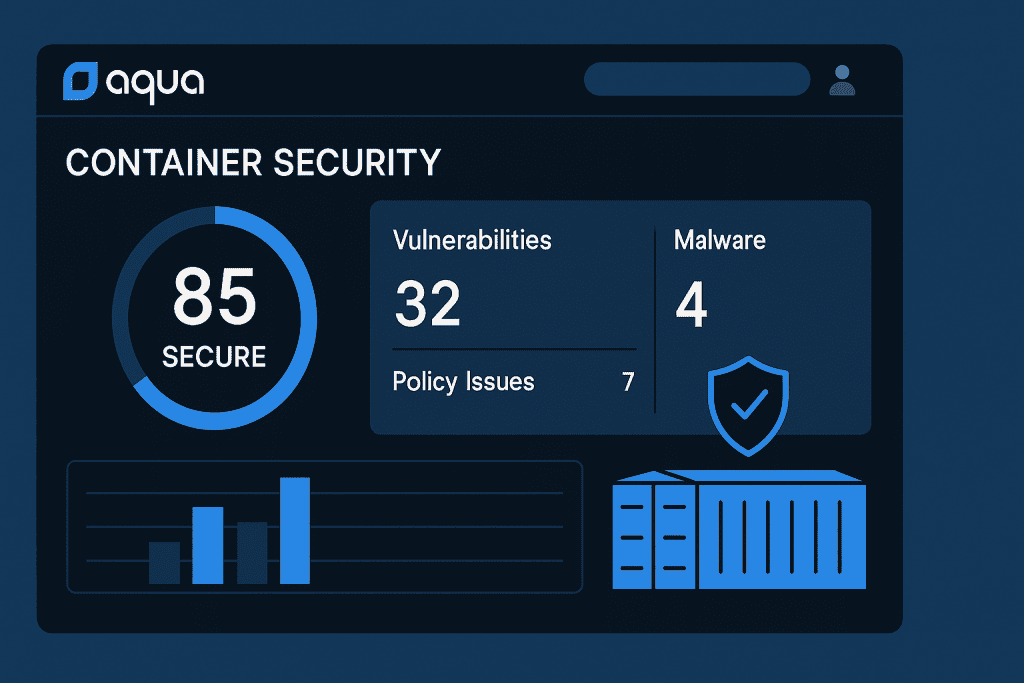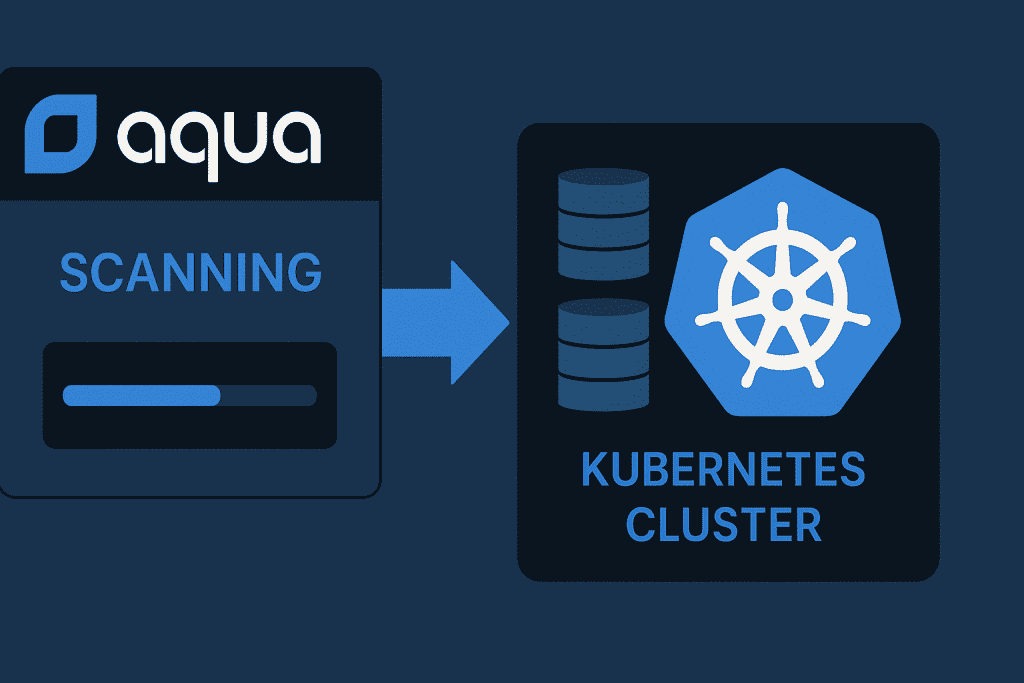When it comes to cybersecurity, especially in the fast-moving cloud-native space, Aqua Security stands out. It focuses on securing containers, Kubernetes, and serverless applications — all essential in today’s digital ecosystems. That’s why I was eager to dive into this review and see if it truly lives up to the hype. Does it deliver the robust protection it promises? Is it easy to use for both security experts and beginners? In this article, I’ll share my firsthand insights to help you decide if Aqua Security is the right fit for your organization. Let’s find out if this rising cybersecurity star truly deserves its reputation.
Overview of Aqua Security
It positions itself as a comprehensive container security platform designed to protect cloud-native applications from development to production. It offers advanced runtime protection, vulnerability management, compliance controls, and deep integrations with CI/CD pipelines.
Key Features:
- Container image scanning for vulnerabilities
- Kubernetes-native security controls
- Advanced runtime protection
- Cloud Security Posture Management (CSPM)
- CI/CD pipeline integration
- Secrets management and encryption
With the increasing frequency of cyber threats targeting cloud infrastructure, Aqua Security steps in to provide companies with tools to stay ahead. It’s worth noting that it integrates smoothly with major cloud providers like AWS, Azure, and Google Cloud, making it incredibly flexible.

It is also backed by a robust threat research team that continuously updates its database to tackle emerging cyber threats. This continuous improvement ensures that users are always armed with the latest defenses, reducing the risk of zero-day exploits or sophisticated attack vectors slipping through the cracks.
In-Depth Analysis of Aqua Security
It has evolved into more than just a scanner; it’s now a holistic platform providing layered defenses across the application lifecycle.
Design and Interface

It sports a clean, intuitive interface. Even though security tools are often packed with features, Aqua’s dashboard doesn’t feel overwhelming. You can customize views based on roles — for example, developers might focus on vulnerability findings, while security teams monitor policy violations.
Navigating the platform is smooth, with thoughtful design touches that make complex data approachable. Visual dashboards display real-time security metrics, making it easier to detect trends or sudden anomalies. The interactive charts and customizable reports also help non-technical stakeholders grasp the security landscape without needing deep technical dives.
Functionality and Features
One of the strongest aspects of Aqua Security is its runtime protection. It goes beyond just spotting issues; it actively blocks suspicious activity based on behavior analytics. This makes it stand out compared to tools that only offer passive scanning.
Secrets management is another strong point. Aqua encrypts and manages secrets across environments, helping reduce risks associated with exposed credentials. This is particularly important when working across multi-cloud environments or hybrid architectures where credentials are often a prime target.
The CSPM module deserves praise too, as it offers full visibility into cloud security configurations. Misconfigurations are among the top causes of breaches, so this feature helps companies stay compliant and secure. For example, Aqua automatically flags risky cloud storage permissions, misaligned network policies, and weak access controls, allowing teams to remediate issues before they become breaches.
It also provides robust integration capabilities. Its API-first architecture allows seamless embedding into DevOps pipelines, enabling security teams to automate checks and enforce policies without slowing down development cycles. This makes it easier to maintain security as code, a principle increasingly valued in modern DevSecOps practices.
Performance

From a performance perspective, it is fast and reliable. Scanning large container registries or Kubernetes clusters is efficient, and the system scales with enterprise needs. Moreover, the API integrations with CI/CD pipelines ensure you’re not adding bottlenecks into your development process.
In my testing, Aqua performed well under load. Even during simultaneous scans across multiple clusters, the system remained responsive and delivered actionable results in a timely manner. This level of scalability is crucial for enterprises that rely on continuous delivery and need to balance speed with security.
Usability
Usability matters. Aqua Security shines with its role-based access controls (RBAC) and customizable alerts. Whether you’re a security veteran or a DevOps engineer, you can tailor the platform to match your workflow. Plus, Aqua provides detailed documentation and a supportive community that can help teams onboard faster.
Aqua’s alerting system is flexible, offering integrations with common messaging platforms like Slack, Microsoft Teams, or PagerDuty. This ensures that security notifications reach the right people in real time, minimizing response times when something suspicious is detected. Combined with detailed forensic data, the platform helps teams not only react to incidents but also learn from them and improve their defenses over time.
Aqua Security Comparison
Let’s compare Aqua Security against real competitors like Prisma Cloud and Sysdig Secure.
| Feature | Aqua Security | Prisma Cloud | Sysdig Secure |
|---|---|---|---|
| Container Scanning | Yes | Yes | Yes |
| Runtime Protection | Advanced behavioral controls | Strong but slightly less granular | Good with Kubernetes focus |
| CI/CD Integration | Deep integrations | Good integrations | Moderate integrations |
| Cloud Support | Multi-cloud (AWS, Azure, GCP) | Multi-cloud | Focused mainly on Kubernetes |
| Pricing Flexibility | Scalable enterprise plans | Enterprise-focused | Competitive for Kubernetes-heavy shops |
Aqua Security stands out particularly in runtime protection and its deep integration capabilities. While Prisma Cloud offers broad cloud security coverage, it sometimes lacks the same granular runtime controls. Sysdig Secure, on the other hand, excels in Kubernetes-focused environments but may not offer as comprehensive multi-cloud support as Aqua.
In real-world use, Aqua’s ability to integrate across multi-cloud and hybrid infrastructures gives it an edge for enterprises managing diverse environments. Additionally, its well-developed API integrations help teams extend the platform’s functionality beyond out-of-the-box features.
Aqua Security Pros and Cons
Before jumping in, here’s a quick breakdown.
| Pros | Cons |
|---|---|
| Excellent runtime protection | Learning curve for advanced features |
| Deep CI/CD and cloud integration | Premium pricing for enterprise plans |
| Strong secrets management | Might be overkill for small teams |
| Detailed compliance and reporting tools | Requires dedicated setup time |
Aqua Security’s advantages are clear for medium to large enterprises, but smaller organizations should weigh whether they need the full suite or if a lighter tool might meet their immediate needs. The learning curve can also be steep initially, but Aqua’s documentation and support resources help smooth that process.
Conclusion
After testing Aqua Security, I’m impressed. It’s not just a vulnerability scanner — it’s a comprehensive cloud-native security solution. It covers multiple fronts, from development to production, offering enterprises the peace of mind they crave in today’s threat-heavy landscape. Whether you’re concerned about runtime attacks, misconfigurations, or compliance audits, Aqua Security has you covered. While the platform is best suited for medium to large enterprises, smaller teams looking to future-proof their operations might also benefit from its layered approach.
I particularly appreciate how Aqua Security embeds security into the development pipeline without slowing things down. In today’s fast-paced environments, the ability to shift security left — integrating it early into development — is a game changer. That’s why I confidently recommend Aqua Security for organizations serious about their cloud security posture.
Aqua Security Rating
Having explored Aqua Security’s features, integrations, and performance, I confidently give it 4.8 out of 5 stars.
You can check out their latest updates on Twitter here.
FAQs
What makes Aqua Security stand out among cybersecurity tools?
Aqua Security’s strength lies in its comprehensive container and Kubernetes runtime protection, secrets management, and integration with popular cloud providers. Unlike many tools focusing solely on scanning, Aqua actively monitors and blocks threats in real time.
Is Aqua Security suitable for small businesses or startups?
While Aqua Security shines in enterprise environments, smaller businesses can still benefit from its security features. However, they should weigh the cost-benefit ratio, as simpler or lighter tools might meet their needs at a lower price.
How does Aqua Security help mitigate cloud-native cyber threats?
Aqua Security offers multiple layers of protection, including vulnerability scanning, cloud configuration monitoring, and runtime behavioral analytics. This helps teams proactively address cyber threats before they escalate into breaches.
Resources
- Gartner. Aqua Cloud Security Platform
- G2. Aqua Security Reviews
- AWS Marketplace. Aqua Security Product Reviews
- Twitter. Aqua Security Team
- YouTube. Aqua Security Overview Video
